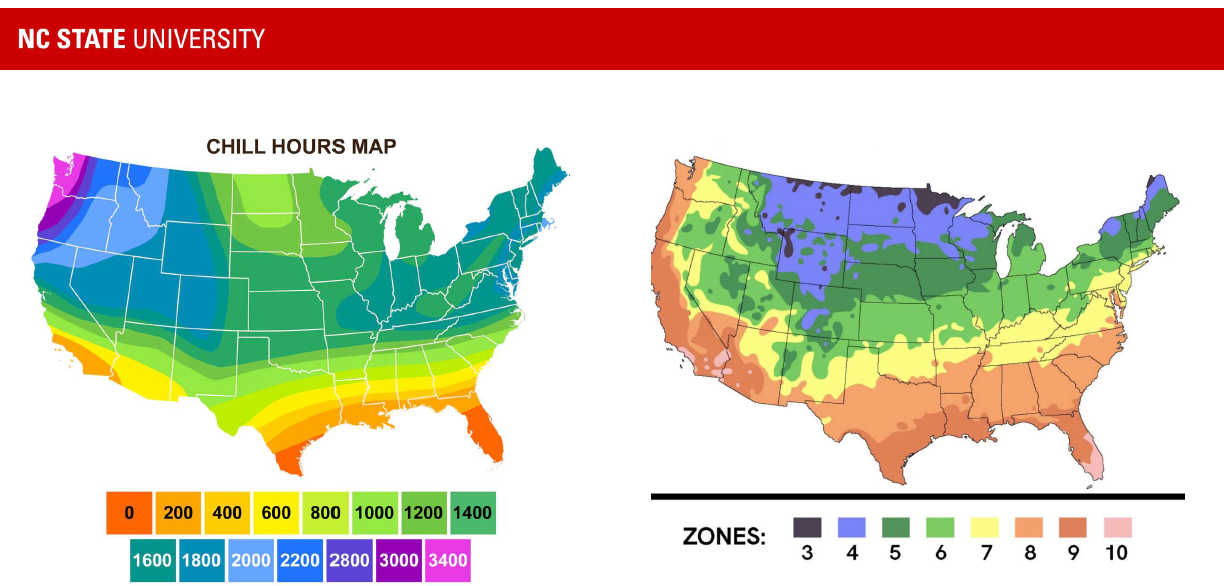In his presentation 'Status of Blueberry Breeding in the United States' (download here), Hudson Ashrafi presents an extensive survey mapping the active blueberry breeding programs[HA1] in the United States. There are 43 active variety development programs in the United States for deciduous and small fruits. Of these, seven programs are active on blueberries: six are run by universities and one centrally by the USDA, and five are private programs, two in California and two in Oregon.
In particular, NC State University in North Carolina, where Hudson Ashrafi works, has 90 accessions in an advanced stage of breeding and are ready to enter the commercial stage.
In a recent exclusive interview with Italian Berry, Hudson Ashrafi talks about the story of blueberry breeding at North Carolina State University (NC State) as a testament to nearly a century of dedication, innovation, and unwavering commitment to advancing blueberry cultivation.
A Pioneering Beginning
The roots of blueberry breeding at NC State goes back to the 1930s, marking a program with a remarkable 90-year history. It all started with a collaboration with the United States Department of Agriculture (USDA). In its initial stages, the program focused on germplasm collection and selection. These foundational efforts set the stage for the remarkable journey of blueberry breeding.
A Lineage of Expertise
Dr. Ashrafi, the fourth breeder in the program, acknowledges the significant contributions of his predecessors. The first breeder, Dr. George Darrow, laid the groundwork for blueberry breeding at NC State. Subsequently, Drs. Gene Galleta and James R. Ballington took up the mantle, adding valuable genetic diversity to northern highbush blueberries by incorporating wild germplasm.

Bearing the Fruits of Research
The NC State blueberry breeding program boasts an impressive array of released varieties. Notable among these are O'Neal, Legacy (a collaborative work with USDA), New Hanover, Pinnacle, Rowan (NC3104) (the southern highbush, tetraploids), and Heintooga, a pentaploid seedless blueberry celebrated for its exquisite flavor despite being less productive.
The program also delved into the breeding of rabbiteye and hexaploid species. Although the production of rabbiteye varieties hasn't discontinued, it has slowed down in response to market dynamics.
A Focus on Collaboration and Expansion
Recent years have seen NC State's blueberry breeding program expand its horizons beyond North Carolina. The primary focus now lies on southern highbush blueberries adaptable to the region. Collaborations with Georgia, Florida, Alabama, and Oregon breeders have opened new avenues for testing advanced selections in varying climates.
The program also sends valuable germplasm to the live repository of blueberries in Corvalis, Oregon, ensuring that genetic resources are preserved and shared for global research and development.
 Splendid Blue is a cultivar selected as an ornamental plant for private gardens: it is easy to manage, has very ornamental leaves and produces excellent-tasting fruit
Splendid Blue is a cultivar selected as an ornamental plant for private gardens: it is easy to manage, has very ornamental leaves and produces excellent-tasting fruit
Incorporating Genomics for Precision Breeding
Under Dr. Ashrafi's leadership, NC State's blueberry breeding program has embraced genomics for marker assisted breedig (MAB)Molecular markers are pivotal in early-generation and genomic selections, streamlining the breeding process. The development of markers for cultivar identification is also a valuable contribution, addressing a significant challenge in nurseries.
These markers have been shared with service providers such as AgBiotech (agbiotech.net) and Eurofins (Eurofins BioDiagnostics - Eurofins USA) to facilitate genotyping for growers and nurseries. This not only aids in fraud prevention but also safeguards patented materials, ensuring that the fruits of labor are protected.
A Future Full of Promise
With around 90 advanced selections currently in the program's pipeline, the future of blueberry breeding at NC State is ripe with possibilities. Before naming a variety, rigorous research is conducted to ensure its suitability for growers. The program places great emphasis on not just producing new varieties but on ensuring their effectiveness in practical applications.
Global collaboration remains a cornerstone of the program's vision. By seeking collaborators around the world to test materials, NC State aims to recommend specific varieties for different regions, thereby ensuring that they thrive in diverse climates.
 United States: division of territory according to climate zones defined by the number of chill hours
United States: division of territory according to climate zones defined by the number of chill hours
A Quest to Replace Aging Varieties
One of the program's overarching goals is to replace aging blueberry varieties, such as Duke, which is now more susceptible to diseases and pathogens. By introducing superior northern highbush blueberries, the program envisions expanding into new markets, including Europe and beyond.
Focusing on the Right Size
Mechanical harvest efficiency is a primary focus, which entails selecting blueberries that detach easily from the plant, resist bruising, and maintain an ideal size and firmness. While bigger blueberries are not always better, the program emphasizes on medium-sized fruits that can be efficiently harvested and packed, ranging from 14 to 18 millimeters.
Conclusion
The history and future of blueberry breeding at NC State University exemplify a legacy of excellence and a commitment to progress. With dedicated breeders, international collaboration, and cutting-edge genomics, the program continues to lead the way in developing new blueberry varieties. The goal is not merely to create new blueberries but to ensure they meet the needs of growers and consumers in diverse regions, safeguarding their investment and delivering the finest blueberries to the world.
Download the presentation 'Status of Blueberry Breeding in the United States'









